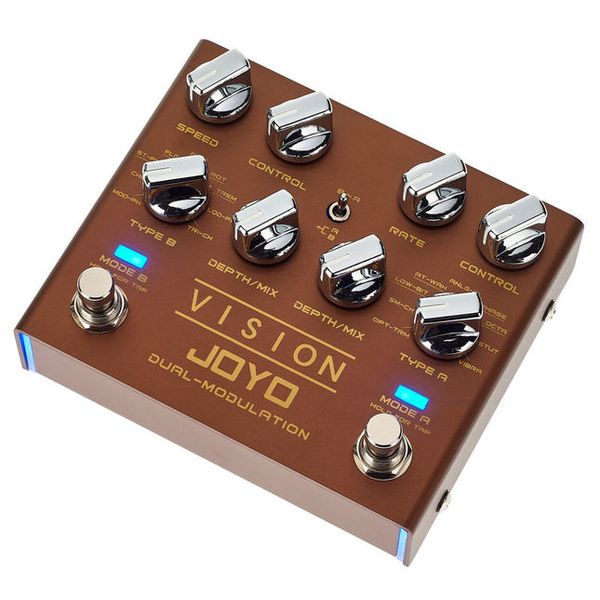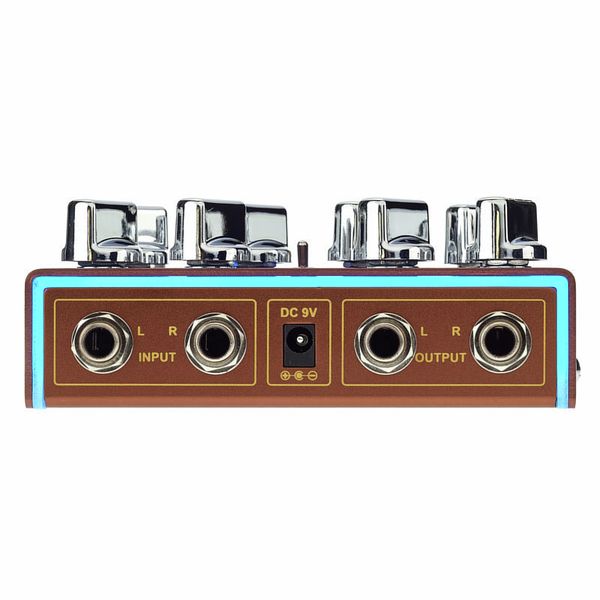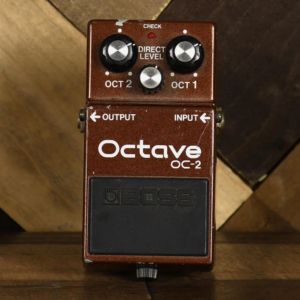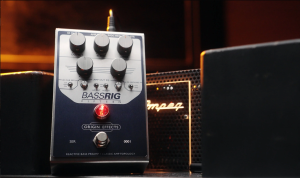A Stereo Modulation Playground for the Adventurous Bassist
Introduction
The Joyo Vision is not your typical modulation pedal — it’s a dual-engine stereo modulation powerhouse designed for players who love to experiment and push sonic boundaries. While many modulation pedals stick to the classics, the Vision throws subtlety out the window, offering two fully independent modulation channels, nine effects per channel, and the ability to run them in series or parallel.
For bassists, this opens up everything from lush, stereo choruses and shimmering vibratos to full-blown synth-like madness. It’s not a pedal for your blues trio — it’s a tool for sound explorers.
TL;DR
The Joyo Vision is a stereo dual-modulation pedal with two independent engines, each offering nine modulation types. It’s capable of everything from smooth chorus and phaser sounds to wild bit-crushing, ring modulation, and sample & hold effects.
On bass, some modes lose low end, but pairing them with an octave pedal transforms them into rich, synth-like tones. It’s not a “set and forget” modulation pedal — it’s an experimental sound design tool for creative bassists who love ambient, electronic, or avant-garde textures.

Design and Controls
Physically, the Vision carries Joyo’s familiar solid build quality: a sturdy metal enclosure, dual footswitches, and a clean, symmetrical layout that invites experimentation. The pedal runs in stereo, which adds dimension and depth when connected to two amps or recording channels.
The Vision features two completely independent modulation engines — Channel A and Channel B. Each has its own set of controls and a dedicated footswitch, allowing you to engage them separately or stack them for complex combinations.
At the heart of the pedal is a Type selector for each channel, giving access to nine modulation effects:
- Chorus
- Flanger
- Phaser
- Vibrato
- Tremolo
- Rotary
- Sample & Hold
- Bit Crusher
- Ring Modulation
- and more
You can route the channels in parallel (A + B side by side) or in series (A feeding into B). The routing toggle on the faceplate lets you quickly switch between the two.
The knobs themselves are responsive and intuitive, with parameters typically controlling rate, depth, and level for each channel. It’s a pedal that rewards hands-on tweaking — and with stereo operation, small adjustments can dramatically alter the soundscape.
Core Features
What sets the Joyo Vision apart is its dual-engine architecture. Each channel can act independently, or you can blend them to create evolving, multi-layered modulation.
For bass players, the core strengths lie in the more traditional modes — chorus, phaser, flanger, and vibrato — which sound lush, full, and preserve low end effectively. The stereo chorus in particular shines: deep, musical, and studio-clean.
The more extreme modes — bit crusher, sample & hold, and ring modulation — can be challenging on bass, as they tend to lose low frequencies. However, when paired with an octave pedal, these modes open the door to synth bass territory. Combining octave → ring mod → stutter creates truly electronic, percussive textures reminiscent of Jojo Mayer’s Nerve or Chris Hargreaves (Submotion Orchestra).
Stacking effects across both channels is where the pedal really comes alive. Feed a chorus into vibrato, or tremolo into sample & hold, and you get evolving, unpredictable modulation that shifts and pulses in stereo — ideal for ambient or experimental compositions.
The Vision is not a one-sound pedal, but rather a modulation lab. It invites exploration and rewards creative routing.

Pros and Cons
Pros
- Two fully independent modulation engines — stackable in series or parallel.
- Nine modulation types per channel, covering everything from subtle to extreme.
- Stereo operation adds huge depth for ambient or experimental setups.
- Excellent chorus, phaser, and vibrato sounds that work beautifully on bass.
- Extremely versatile — from classic modulation to synth-like, glitchy madness.
Cons
- Some modes (bit crusher, ring mod) lose low end on bass unless paired with an octave pedal.
- Not ideal for traditional bass gigs — too wild for most live mixes.
- Takes time to learn how to balance and combine both channels effectively.
- Can be noisy when stacking certain high-intensity effects.
FAQs
Q1: Does the Joyo Vision work well on bass?
Yes — the modulation-based effects like chorus, phaser, and vibrato sound excellent. Some of the more experimental modes can lose low end, but combining them with an octave pedal or EQ restores thickness.
Q2: Can both channels run at once?
Absolutely. You can run Channel A and B in series (A → B) or parallel (A + B), allowing for endless modulation layering possibilities.
Q3: Is it stereo?
Yes. The Vision is a true stereo pedal, making it ideal for recording setups, dual-amp rigs, or immersive headphone playing.
Conclusion
The Joyo Vision isn’t a typical modulation pedal — it’s a creative tool for sonic exploration. With its dual modulation engines, stereo operation, and mix of classic and experimental effects, it gives bass players access to a huge palette of textures, from lush and subtle to chaotic and synth-like.
It’s not for everyone — traditional players may find it overkill — but for those who love ambient soundscapes, electronic grooves, or pushing their tone into new territory, the Vision is a goldmine of inspiration.
If you’ve ever wished your bass could sound like a modular synth, the Joyo Vision is your ticket there.
Get the Joyo Vision at the best price now!
Other Joyo Gear You Might Like
If you enjoyed checking out this Joyo pedal, here are more Joyo products worth exploring — all tested and reviewed here on BassGearReviews:
- Joyo Scylla Compressor – Smooth compression for consistent, punchy bass tone.
- Joyo Tidal Wave – Vintage preamp based on the Sansamp circuit.
- Joyo Monomyth Bass Preamp – Versatile preamp with EQ shaping and DI output.
- Joyo Double Thruster – Dual-drive section for layered grit and boost.
- Joyo Narcissus – Vintage Chorus for your 80’s sounds





